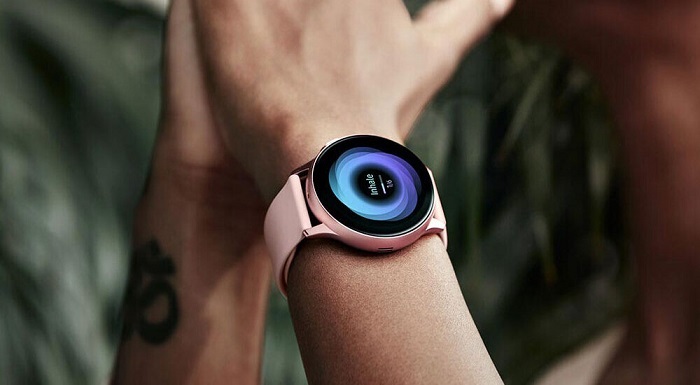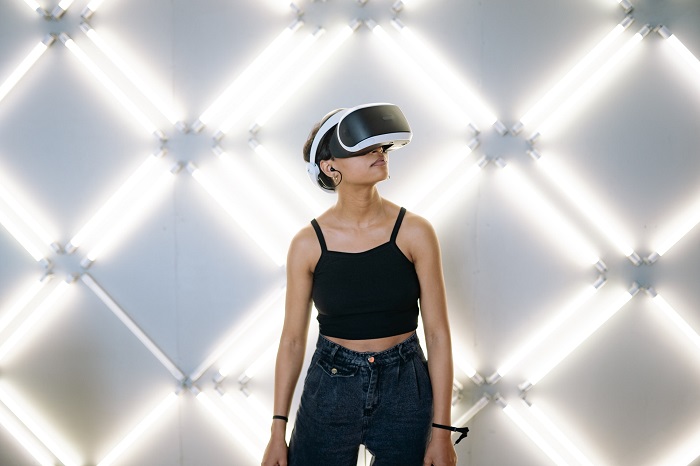ISABEL RUBIO ARROYO | Tungsteno
Every 40 seconds someone commits suicide, according to the World Health Organisation. Technology has the potential to become a valuable ally in addressing mental health issues; for example, some mobile phone apps aim to help people deal with and prevent emotional crises. In addition to such apps, there are virtual reality systems to treat phobias and other disorders, and smartwatches that promise to monitor stress and help us manage it. But to what extent can we use these technologies to achieve our much-desired emotional well-being?
Virtual reality against phobias
Anxiety disorders are the most common mental health problem diagnosed by primary care physicians, according to the American Psychological Association. They are often "particularly challenging to treat, often requiring long-term therapy." In vivo exposure and desensitisation in the anxiety-provoking setting can be effective treatments. Some psychologists use virtual reality to treat panic attacks, agoraphobia (fear and anxiety in places and situations where escape is difficult), obsessive compulsive disorder, fear of flying or driving, claustrophobia, arachnophobia or fear of medical procedures.
Several research studies have analysed the potential of this technology to treat different disorders. Through this technique, the patient can experience realistic and carefully controlled exposure to an anxiety-provoking scenario, all from the therapist's own office. An overview published in 2020 indicates that virtual reality can be used as a supportive therapy to treat phobias or anxiety, but should not replace traditional treatments.
Access to virtual reality devices has become more accessible in recent years, as reported in the book Virtual Reality Therapy for Anxiety Disorders: "While virtual reality environments were initially quite costly and demanded powerful computers, their price has decreased of late, making this form of treatment an intriguing option for therapists."
Some psychologists turn to virtual reality to treat patients' fear of driving. Credit: Psious.
Smartwatches that measure stress
Beyond virtual reality, there are many other technologies aimed at helping patients deal with anxiety. There are several smartwatches on the market that, in addition to monitoring heart rate or exercise, purport to measure stress levels. To do so, these devices often look at heart rate variability. "Heart rate variability is one of the most robust, non-invasive measures of stress response," says Daniel McDuff, a researcher at Affectiva, a Cambridge-based company that analyses emotions from facial expressions.
But it’s important to remember that these watches are not medical devices, so the measurements may be inaccurate. McDuff stresses that "the trouble with using heart rate variability to measure stress is that both distressing and exciting events can trigger this nervous-system response." For a physical activity tracker to be able to tell if someone is stressed, the expert believes it is necessary to also track the context of the person's situation.

Some smartwatches allow you to measure stress and advise you to do breathing exercises. Credit: Samsung.
Apps to manage emotional crises and prevent suicides
While some smartwatches suggest breathing and meditation exercises, there are also other apps designed for the prevention and management of emotional crises. Such is the case of Sanvello, which allows users to keep a daily record of their mood and guides them in meditation and deep breathing exercises, or Calma, which also aims to prevent suicide in teenagers and young adults. Suicide is one of the leading causes of death among young people in many countries. "Rapid intervention methods are needed to provide support during the suicidal process (transition from idea to suicidal behaviour), since for most people this process takes 10 minutes or less," explain the health workers behind the app.
In a crisis situation, Calma suggests activities based on dialectical behavioural therapy. For example, it may advise taking an ice-cold shower. "Cold water reduces your body temperature and the intensity of the emotion you are feeling," it says. But its creators insist that the app in no way replaces psychological or psychiatric care from a specialist. The app also provides addresses of nearby centres and phone numbers that could be useful at the time of the crisis.
Some people who commit suicide do so under the influence of a psychotic break. To prevent this, the Hospital 12 de Octubre in Madrid has tested Searching Help. This app makes it possible to find out how much time psychotic patients spend on the Internet and whether they make searches related to delirium. Its developers claim that "one of the invisible and silent symptoms of delirium is the alteration in the digital behaviour of patients."
The Hospital 12 de Octubre has carried out tests with an app designed to prevent suicide in psychotic patients. Credit: SaludMadrid.
Juan Manuel Espejo-Saavedra, clinical psychologist at Hospital 12 de Octubre, says that sometimes these patients look for words related to their delirium; for example, about conspiracies, poisons or terrorism. There are also those who experience compulsive behaviour on social networks: they interact excessively with other users, give more likes than usual or change their passwords. Searching Help takes into account patients' activity on their devices and, if it detects abnormal behaviour or any danger, it immediately alerts the psychiatrist handling their case. Espejo-Saavedra explains that "a specific dictionary is created for each patient with words in the context of their specific delusional ideation. This allows us to detect if there is suicidal ideation and can prevent suicidal behaviour from developing."
"Mobile devices like cell phones, smartphones and tablets are giving the public, doctors and researchers new ways to access help, monitor progress and increase understanding of mental wellbeing," says the US National Institute of Mental Health. According to the institute, the greatest challenge is to obtain scientific evidence that these technological interventions work as well as traditional methods. More research is essential to ensure we understand in which specific cases and with which people these technologies are useful in the treatment of phobias, anxiety and other mental health disorders.
· — —
Tungsteno is a journalism laboratory to scan the essence of innovation. Devised by Materia Publicaciones Científicas for Sacyr’s blog.
